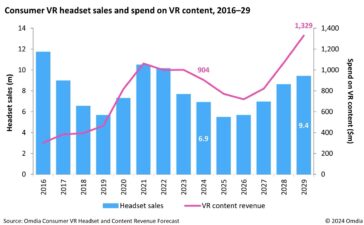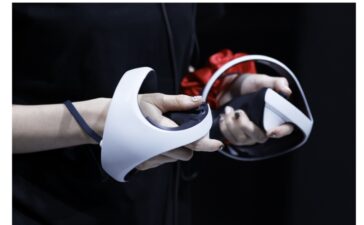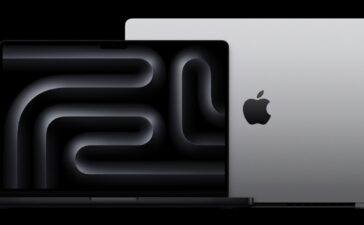As the race in wearable tech continues, Apple has consistently been rolling out new updates and products aimed at creating a single unified smart ecosystem. In line with this, the Apple Vision Pro headset has been touted as the tech titan’s next big game-changer in immersion and media consumption. However, according to experts, Apple’s mission of successfully developing headsets that are actually more consumer-centric rather than brand showcases requires timely pivots.
Consequently, there is talk that the Vision Products group is considering going the smart glasses route. Should this be true, it would pit Apple against the sector’s current darling, the Ray-Ban and Meta collaboration. So, while Apple does have experience developing consumer products that make it a worthy industry contender, it still faces numerous pain points that Ray-Ban and Meta have seemingly cracked. This is especially apparent with the still divisive Vision Pro. With this, it’s worth analyzing what these hurdles are and why Apple has some catching up to do.
Aesthetic
Although many Apple fans will argue that substance beats style, the Vision Pro’s design is cumbersome and not subtle at all. While this may do well in settings where wearing such devices is acceptable, like during viewing parties or gaming sessions, it limits widespread use. Its sheer size and weight also mean that it can be rather uncomfortable during extended wear, which is also why Apple has a relatively new patent for cooling features.
On the flip side, the Ray-Ban Meta smart glasses are known for their sleek and fashionable designs. While each pair does boast an updated ultra-wide 12 MP camera and five-mic system, its integration is subtle. Unless the indicator light is on, the specs can pass for any other of Ray-Ban’s popular designs. Plus, the luxury eyewear maker has a long history of classic, stylish designs like the Wayfarers, Aviators, and Clubmasters, which are easily accessible through sunglasses retailers and Ray-Ban’s own flagship stores. With this level of visual and brand recall, consumers are less likely to raise eyebrows at a pair of smart glasses that come in classic frames.
To further bridge the gap between fashion and function, these smart glasses are also regularly released in new silhouettes and colorways. Aside from the Wayfarers, they’ve also recently introduced the Skylar, which has pink lenses and a modern cat-eye shape, and the limited edition Wayfarers, which have Transitions lenses and a clear frame. All this ensures that wearers can use the specs comfortably and confidently in virtually any location or occasion.
Accessibility
Over the last few years, Apple has been dedicated to improving the accessibility of its items. For the Apple Vision Pro, this has manifested in the adoption of new capabilities, like eye tracking, live captioning, and more. These are directly in line with initial criticisms that argued the headset’s steep price tag could not be justifiable for those with disabilities who won’t even get to fully enjoy it. However, these attempts at improving inclusivity have not been smooth sailing. Recently, researchers were able to exploit a security vulnerability in the aforementioned Apple eye-tracking software. Through this, they found that they could effectively recreate a user’s online actions, including inputting passwords and pins.
While Apple has said they’ve fixed this issue, it underscores how much work is still to be done.
Interestingly, Ray-Ban and Meta have taken a slightly conservative but more targeted approach to accessibility. Perhaps it’s this more focused strategy that ensures any kinks are not overlooked, and initiatives can be improved with more dedication. To date, their smart glasses’ accessibility highlight is the recent partnership with Be My Eyes. This is an existing program wherein users with sight difficulties can contact a sighted volunteer who can effectively help them communicate or navigate in the moment. At the recent Meta Connect event, company leader Mark Zuckerberg noted that this feature can help with a variety of needs, like finding your way around a new city or reading signs that don’t have Braille.
Affordability
Finally, there is the idea of affordability. To be clear, neither Ray-Ban Meta nor Apple’s prices are cheap, but their significant cost differences are a huge deciding factor for most buyers. For one, the Vision Pro costs around $3,500 per unit. This is justified given its various components, such as the two micro OLED displays, which cost the manufacturer over $220 each. Aside from this, you’re paying for the prestige of an Apple product and the compatibility with other impressive devices in its ecosystem. That said, this is not always enough of a draw for most consumers, especially if they’re not entrenched in Apple’s product line anyway. This is why some reports state that a cheaper Vision Pro version is set to launch sometime next year.
Meanwhile, the Ray-Ban Meta specs cost between $299 and $429, depending on the model. Of course, these prices can increase depending on the add-on and shipping, but that’s still a far cry from the thousands that Apple asks for. As such, this is a much more agreeable expense that broadens its pool of consumers.





